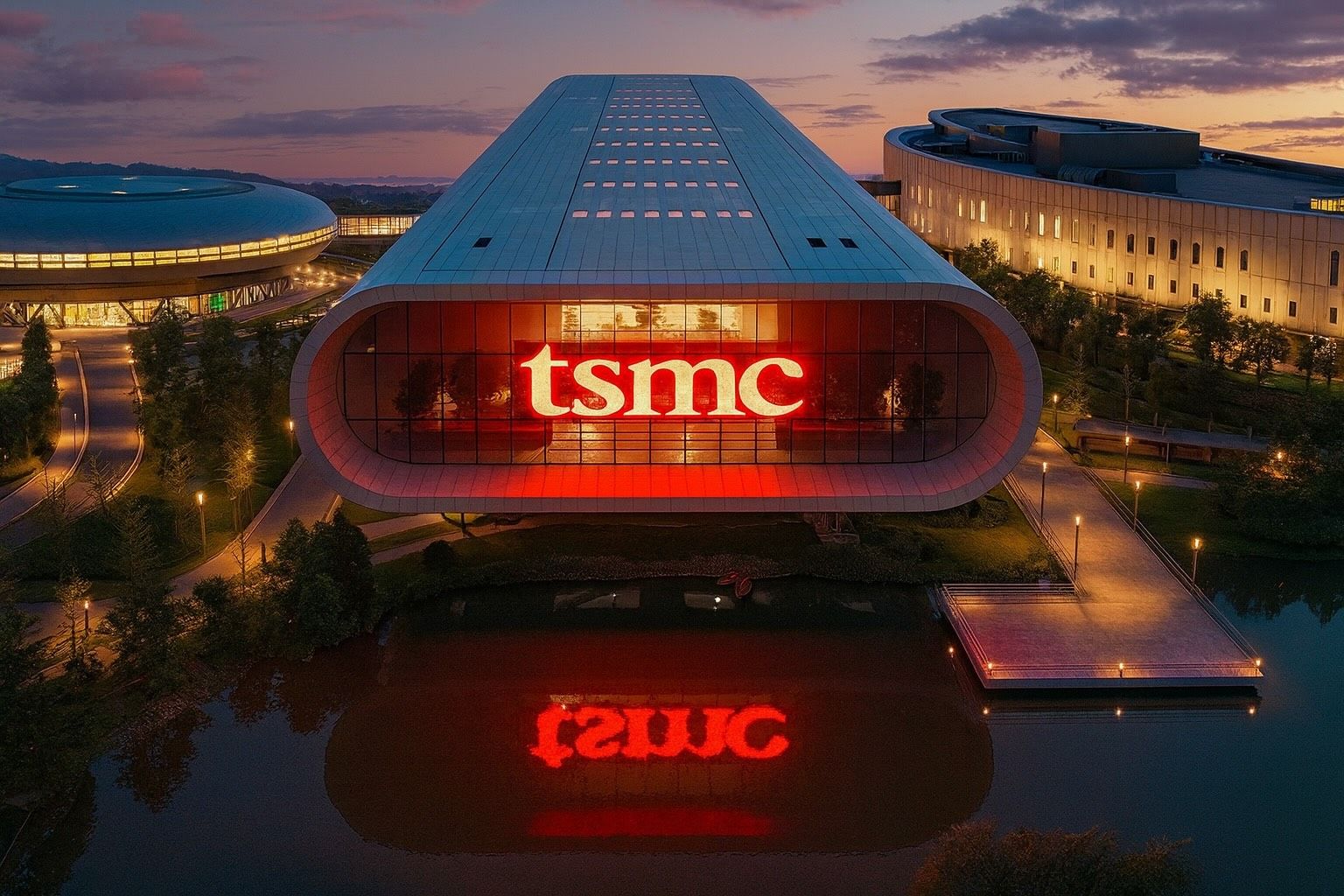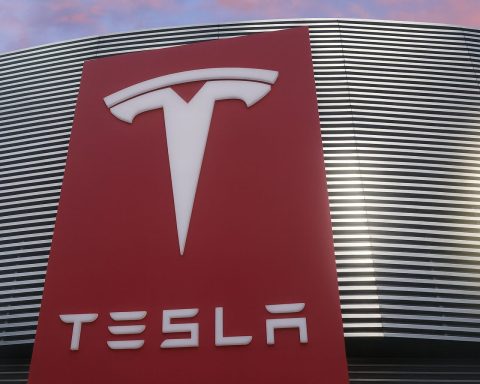Updated: November 16, 2025
Taiwan Semiconductor Manufacturing Company (NYSE: TSM) sits at the center of the global AI hardware build‑out, and November 2025 has delivered a fresh wave of data points: record October sales, a blowout Q3 earnings print, a bigger capex plan, and renewed geopolitical noise around Taiwan’s chip dominance. The key question for investors now is whether TSM stock still offers attractive upside after a 50%+ surge over the last year. [1]
Below is a detailed, SEO‑focused breakdown of the latest news, fundamentals, risks, and a 12–18 month TSM stock outlook as of mid‑November 2025.
TSM Stock Today: Price, Valuation and Momentum
As of the latest close (November 15, 2025), TSM trades around $285 per share, with:
- 52‑week range: roughly $134.25 – $311.37 [2]
- Current price is ~8.5% below the 52‑week high and over 110% above the 52‑week low (a more than doubling from the bottom). [3]
- Market cap: about $1.4–1.5 trillion. [4]
- 50‑day moving average: ~$285;
200‑day moving average: roughly $220–240, so the stock remains firmly in a longer‑term uptrend. [5] - RSI (14‑day): about 45, indicating neutral momentum — neither overbought nor oversold. [6]
On valuation:
- Trailing P/E is in the mid‑20s to high‑20s depending on the data provider. [7]
- Forward P/E sits around 23x, close to the upper half of TSMC’s 10‑year historical range but not at bubble levels. [8]
Given that consensus expects earnings growth of ~45% in 2025 and ~20% in 2026, the implied PEG ratio is around 1 or lower — suggesting the stock is not cheap, but still reasonably valued for a structural growth leader. [9]
November 2025: The Big New Catalysts for TSM
1. Record October Revenue and Guidance Upgrade
On November 10, 2025, TSMC reported October 2025 revenue of NT$367.47 billion, up 11% month‑over‑month and 16.9% year‑over‑year, marking a record month for the company. Year‑to‑date (January–October) revenue was already 33.8% higher than the same period in 2024. [10]
Investor’s Business Daily and Barron’s both highlighted that this beat allowed TSMC to raise its full‑year revenue growth outlook from “around 30%” to the mid‑30% range in USD terms, fuelled by AI accelerators, smartphones and high‑performance computing (HPC). [11]
Despite some headlines about “slowing growth” — October’s YoY rate was the slowest in ~18 months — major analysts and the Wall Street Journal warned that one month’s moderation shouldn’t be mistaken for an AI bust, especially given record absolute revenue and a still‑elevated growth baseline. [12]
Takeaway: October’s numbers confirm that the AI upcycle is intact and give management enough confidence to guide to mid‑30s revenue growth for 2025, a very strong outcome for a company of TSMC’s size.
2. Q3 2025 Earnings: Near‑40% Profit Surge and Monster Margins
TSMC’s Q3 2025 results, discussed in mid‑October and formally approved by the Board on November 11, were some of the strongest in its history: [13]
- Revenue: around US$33.1 billion, up ~40% YoY and >10% QoQ.
- Net profit: roughly NT$452.3 billion (~US$15 billion), nearly 40% higher than a year ago.
- Margins:
- Gross margin: ~59.5%
- Operating margin: ~50.6%
- Net margin: ~45–46%
- EPS:NT$17.44 for the quarter.
Advanced nodes and AI/HPC workloads dominated:
- AI + HPC accounted for well over half (around 57%) of wafer sales.
- Advanced technologies (7nm & below) made up ~74% of wafer revenue, with 3nm alone at 23% and 5nm at 37%. [14]
The Board also: [15]
- Approved a NT$6.0 per share cash dividend for Q3 2025, payable in April 2026.
- Signed off on ~US$15 billion of new capital appropriations for 2026, focused on new fab construction, advanced process capacity, and advanced packaging.
Takeaway: TSMC is now printing software‑like margins on mega‑cap scale revenue, which is unusual even in tech and underpins the bull case that this is the picks‑and‑shovels winner of the AI era.
3. AI Roadmap: 2nm Ahead of Schedule and Advanced Packaging Ramp
Multiple recent updates show TSMC pressing its technology lead:
- The company’s 2nm process (N2) is ahead of schedule, with mass production now expected to begin in the second half of 2025 rather than later, enabling faster adoption in flagship smartphones, PCs and AI accelerators. [16]
- TSMC is aggressively scaling advanced packaging (CoWoS, SoIC, InFO), with plans to at least double – and in some reports quadruple – CoWoS output by the end of 2025, and to reach around 130,000 advanced packaging wafers/month by 2026 to ease AI GPU bottlenecks. [17]
Analysts at Bloomberg Intelligence see the advanced semiconductor packaging market growing to about US$80 billion by 2033, and TSMC is positioned as one of the dominant suppliers of these high‑value services. [18]
Takeaway: This isn’t just a node‑shrink story. Packaging and 3D integration are becoming as important as raw transistor scaling, and TSMC is spending heavily to own this niche.
4. Foundry Market Share: TSMC’s Dominance Climbs Above 70%
The latest TrendForce and Counterpoint data confirm that in Q2 2025 TSMC captured a record ~70.2% share of the global pure‑play foundry market, generating over US$30 billion in quarterly revenue as total foundry revenue hit US$41.7 billion. [19]
At the leading edge (3nm/2nm), TSMC’s share is even more extreme — over 90% of that market by some estimates. [20]
Takeaway: TSMC is increasingly a quasi‑monopoly at advanced nodes, which strengthens its pricing power but also makes it a single point of failure in the global tech supply chain.
5. Global Expansion: Arizona, Japan, Germany and a Massive U.S. Capex Bill
TSMC is moving from “Taiwan‑centric” to a more distributed fab footprint:
- Official and media reports point to over US$100 billion of committed U.S. investments, mainly in Phoenix, Arizona, with multiple fabs spanning advanced 4nm, 3nm and future nodes. [21]
- New commentary this week from U.S. outlets suggests the total planned Arizona complex, including later phases, could be as high as US$165 billion over time, framed as a way to secure AI chip supply and reduce tariff exposure. [22]
- TSMC is also building fabs in Japan and Germany, diversifying away from Taiwan and closer to key automotive and industrial customers. [23]
Takeaway: These moves lower geopolitical concentration risk but weigh on margins, as offshore fabs are more expensive to build and operate than plants in Taiwan. Management and the FT have acknowledged that supply‑chain diversification could shave 1–3 percentage points off gross margin annually over several years. [24]
6. Analyst Targets and Institutional Flows
Recent updates from Wall Street and institutional investors include:
- Bank of America Securities reaffirmed a Buy rating on TSM in mid‑November, highlighting the company as one of the “best fundamentally strong stocks to buy”, particularly for AI exposure. [25]
- Across major aggregators, 12‑month price targets cluster roughly in the US$345–372 range, with high targets up to US$400 and lows around US$290. From today’s ~$285 price, that implies about 20–30% average upside, and up to ~40% in the most bullish Street scenario. [26]
- Hedge funds and active managers remain involved but are trimming into strength: recent 13F‑style filings show firms such as Summitry LLC, Massachusetts Financial Services, and David Rolfe’s Wedgewood‑linked strategies reducing their TSM positions while continuing to hold sizable stakes. [27]
Takeaway: Wall Street is still generally bullish, but some smart‑money managers are de‑risking after the big run, which fits with a “buy on dips, not on spikes” approach for new entrants.
7. Geopolitics: Hsinchu in the Crosshairs and Taiwan’s AI‑Fueled Economy
Geopolitical risk remains the single biggest overhang on TSM:
- Last week, China’s embassy in Washington posted satellite photos of Hsinchu Science Park — where TSMC’s flagship fabs and R&D centers sit — in what many interpreted as a not‑so‑subtle reminder of Taiwan’s vulnerability. [28]
- Reuters reports that Taiwan’s economy could grow close to 6% in 2025, driven heavily by semiconductor exports for AI. While the U.S. has imposed broad 20% tariffs on many Taiwanese exports, semiconductors are currently exempt, limiting near‑term damage to TSMC. [29]
Nvidia CEO Jensen Huang underscored how central TSMC has become by reportedly saying “No TSMC, no Nvidia” during a November visit to Taiwan — his fourth in 2025 — while confirming his latest Blackwell chips aren’t being sold into China due to export controls. [30]
Takeaway: Demand is booming, but TSM is increasingly entangled in great‑power rivalries. Any escalation across the Taiwan Strait remains a low‑probability but high‑impact tail risk that markets cannot fully price.
Fundamentals: How Strong Is TSMC Going into 2026?
Growth and Margins
Key fundamental highlights as of Q3 2025: [31]
- Revenue (last 12 months): around US$115–116 billion, up nearly 40% YoY.
- Jan–Oct 2025 revenue: +33.8% YoY in NT dollars.
- Gross margin: ~59–60%; operating margin ~50%; net margin mid‑40s.
- Free cash flow: extremely strong and easily supports aggressive capex plus dividends.
Consensus forecasts expect earnings growth of ~45% in 2025 and ~20% in 2026, driven primarily by: [32]
- Ramp‑up of 3nm and upcoming 2nm nodes.
- Explosive AI GPU demand from customers like Nvidia, AMD and cloud hyperscalers.
- Recovery in smartphone and PC demand off a depressed base.
Balance Sheet and Dividend
TSMC’s financial position is robust:
- Net cash position measured in the hundreds of billions of NT dollars (~US$50–70 billion equivalent). [33]
- Debt‑to‑equity ratio is low (around 0.2), and current ratio above 2, indicating solid liquidity. [34]
- The NT$6.0 per share quarterly dividend approved for Q3 continues a pattern of rising payouts, though the dividend yield remains modest given the strong share price performance. [35]
Takeaway: TSMC combines high growth, elite margins, and a fortress balance sheet, which is rare at trillion‑dollar scale.
Valuation Check: Expensive or Reasonable?
Current valuation vs. key drivers:
- Forward P/E ~23x, with expected EPS growth of ~45% (2025) and ~20% (2026). [36]
- P/E‑to‑growth (PEG) stands near or below 1 depending on assumptions, which is attractive for a company with TSMC’s moat.
- Versus many AI beneficiaries (some trading at 30–50x forward earnings), TSMC still looks cheaper on a pure multiple basis, while sitting upstream of many of them in the value chain. [37]
However:
- Margins may face slow structural pressure from high‑cost offshore fabs (Arizona, Japan, Germany). [38]
- The stock is up over 50% in the last 12 months, so a lot of good news is already priced in. [39]
Bottom line on valuation: TSM is not a bargain basement value play, but relative to its growth, quality, and market share, it still screens as reasonably valued rather than overheated.
Technical Picture: Short‑Term Neutral, Long‑Term Uptrend
From a purely chart‑based perspective:
- Price near $285 is roughly in line with the 50‑day moving average and well above the 200‑day average in the low‑$220s, confirming a strong longer‑term uptrend. [40]
- RSI in the mid‑40s and mixed momentum indicators (MACD slightly positive, some sell signals from shorter‑term MAs) suggest a consolidation phase rather than a blow‑off top. [41]
- Various technical services flag support levels in the high‑$270s and resistance in the high‑$280s to low‑$300s, making the $275–$300 range a key battleground in the near term. [42]
For traders, that implies TSM is range‑bound short‑term, with breakouts above ~$300 or breakdowns under ~$270 likely to set the next directional move.
12–18 Month TSM Stock Outlook: Base, Bull, and Bear Cases
Important: The scenarios below are opinionated analysis for informational purposes only, not financial advice or a recommendation to buy or sell any security.
Base Case (Most Likely): Gradual Upside, Volatile Path
Assumptions
- AI and HPC demand remains strong but normalizes from “panic buying” levels.
- 3nm continues to ramp smoothly; 2nm enters volume production in late 2025/early 2026. [43]
- Capex stays high but manageable; margins drift slightly lower as overseas fabs come online, but remain best‑in‑class. [44]
- No major geopolitical shock; cross‑strait tensions stay at a simmer, not a boil. [45]
Implications
- EPS grows broadly in line with consensus (high‑teens to low‑20s CAGR beyond 2025). [46]
- Market assigns TSM a forward P/E in the low‑ to mid‑20s — roughly where it trades now. [47]
- In this scenario, TSM stock grinds higher toward the Street’s average price target band (~US$345–370) over 12–18 months, implying moderate double‑digit upside from today, but with 20–30% drawdowns possible along the way.
Bull Case: AI Demand Overshoots, 2nm Ramp Is Smooth
Assumptions
- AI infrastructure spending re‑accelerates as new use‑cases emerge beyond hyperscale data centers (AI PCs, AI smartphones, edge devices). [48]
- TSMC’s 2nm node comes online with better‑than‑expected yields, and advanced packaging capacity fully alleviates AI GPU supply shortages. [49]
- Off‑Taiwan fabs receive substantial subsidies and tax credits, minimizing margin dilution.
Implications
- Revenue and EPS outpace current consensus; growth stays above 25% for longer.
- Market is willing to pay a higher forward multiple in the high‑20s given TSMC’s quasi‑monopoly status at the cutting edge.
- Under this setup, TSM could test or exceed the most bullish current Street targets near US$400, though that would likely require both flawless execution and benign geopolitics.
Bear Case: AI Digestion, Oversupply, or Geopolitical Shock
Assumptions
- AI capex pauses after the initial build‑out as customers digest capacity and focus on utilization.
- Rising competition at advanced nodes and/or yield issues at 2nm reduce TSM’s pricing power. [50]
- Offshore fabs prove more costly than expected and margins compress faster, or geopolitical tensions spike (sanctions, blockade risk, etc.). [51]
Implications
- Revenue growth slows sharply into the low teens or single digits for a period.
- The market cuts the forward P/E closer to the mid‑teens, more in line with a cyclical semiconductor name.
- In that environment, TSM could retrace toward long‑term moving averages (for example, back toward the low‑$200s) or worse in a real crisis scenario.
Key Risks to Watch
- Geopolitical risk (Taiwan–China–U.S.)
- Any military escalation, blockade, or severe sanctions could disrupt TSM’s fabs and upend the entire global tech ecosystem. [52]
- Export controls and tariffs
- Existing and future U.S. export restrictions on advanced chips to China, plus evolving tariffs, can shift demand patterns and raise costs, even if semiconductors remain currently exempt from some measures. [53]
- Capex and margin pressure
- Massive investment in the U.S., Japan and Germany brings strategic benefits but risks overcapacity or permanently lower profitability if subsidies don’t fully offset higher costs. [54]
- Customer concentration
- A small number of giants (Nvidia, Apple, AMD, Qualcomm, big cloud providers) make up a large share of revenue; any shift in their supply strategies or foundry diversification could hurt TSM. [55]
- Cyclical demand swings
- Even within a secular AI uptrend, semiconductors remain cyclical; a global slowdown or inventory correction could lead to sharp, temporary downturns.
Bottom Line: Is TSM Stock Still Attractive in November 2025?
Putting it all together:
- Fundamentally, TSMC is delivering explosive growth, record margins, and a reinforced technology lead at both the node and packaging levels. [56]
- Strategically, it controls around 70% of the global pure‑play foundry market and an even larger share at advanced nodes, making it one of the most important companies in the world for AI and high‑end computing. [57]
- Valuation is no longer cheap, but still reasonable relative to growth and quality — especially compared with other AI winners trading on richer multiples. [58]
For long‑term investors comfortable with geopolitical risk, TSM remains a high‑quality core holding candidate in the AI and semiconductor space, with the base case pointing to solid but not explosive upside from current levels over the next 12–18 months.
For short‑term traders, TSM looks to be in a sideways consolidation around its 50‑day moving average, with the $275–$300 zone acting as a key range to watch for breakouts or breakdowns. [59]
This article is for informational and educational purposes only and does not constitute investment advice, a recommendation, or an offer to buy or sell any security. Always do your own research or consult a licensed financial advisor before making investment decisions.
References
1. www.investors.com, 2. www.indmoney.com, 3. www.indmoney.com, 4. www.marketwatch.com, 5. stockanalysis.com, 6. stockanalysis.com, 7. www.investing.com, 8. www.gurufocus.com, 9. finance.yahoo.com, 10. pr.tsmc.com, 11. www.investors.com, 12. www.barrons.com, 13. pr.tsmc.com, 14. www.tomshardware.com, 15. pr.tsmc.com, 16. www.eweek.com, 17. www.eweek.com, 18. www.bloomberg.com, 19. counterpointresearch.com, 20. semiwiki.com, 21. www.eweek.com, 22. 247wallst.com, 23. apnews.com, 24. www.ft.com, 25. finviz.com, 26. www.tipranks.com, 27. www.marketbeat.com, 28. www.tomshardware.com, 29. www.reuters.com, 30. timesofindia.indiatimes.com, 31. pr.tsmc.com, 32. finance.yahoo.com, 33. stockanalysis.com, 34. www.marketbeat.com, 35. pr.tsmc.com, 36. www.gurufocus.com, 37. www.tomshardware.com, 38. www.ft.com, 39. stockanalysis.com, 40. stockanalysis.com, 41. www.investing.com, 42. marketchameleon.com, 43. www.tomshardware.com, 44. www.ft.com, 45. www.tomshardware.com, 46. finance.yahoo.com, 47. www.gurufocus.com, 48. www.voronoiapp.com, 49. www.eweek.com, 50. www.tomshardware.com, 51. www.ft.com, 52. www.tomshardware.com, 53. www.reuters.com, 54. www.ft.com, 55. www.barrons.com, 56. www.tomshardware.com, 57. www.design-reuse.com, 58. www.gurufocus.com, 59. stockanalysis.com










